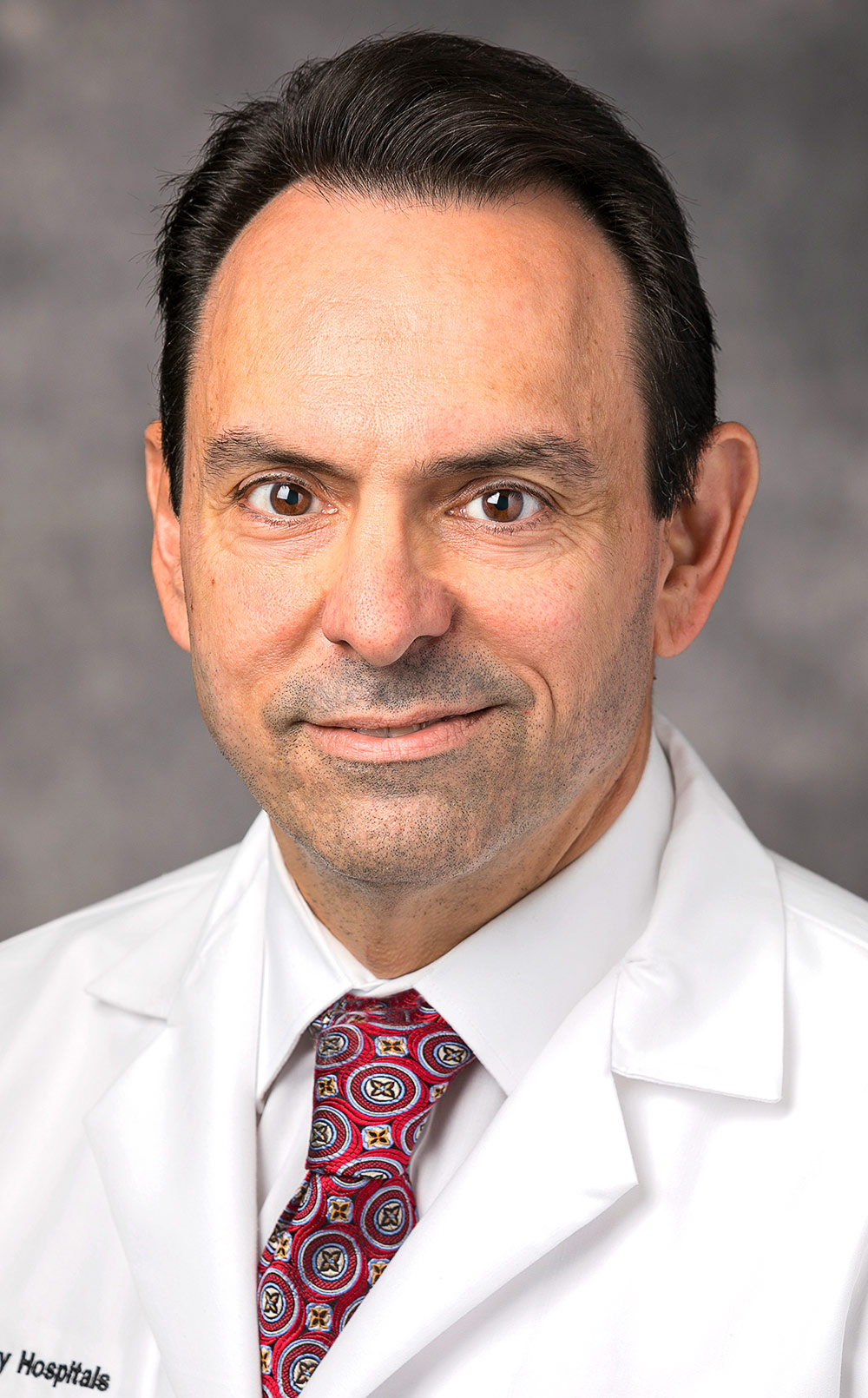Taking the Helm
January 08, 2018
A conversation with Ted Teknos, MD, new President of UH Seidman Cancer Center
 TED TEKNOS, MD
TED TEKNOS, MDQ: What are the most important trends in cancer care right now and how is UH Seidman Cancer Center positioned to embrace them?
A: Seidman is extremely well positioned for the emerging trends in cancer care. The most important trend is creating greater healthcare value for our patients. That translates into providing the highest- quality care while minimizing costs. Most healthcare systems aren’t able to report on health outcomes and cost because patients leave their hospital and care is fragmented. What really drew me to Seidman is the fact that we have a large network that includes every part of the patient continuum: primary care providers, community hospitals, tertiary hospitals, rehab hospitals, hospice and home care. Furthermore, our Accountable Care Organization (ACO) is the fifth largest in the country. As a result, we are perfectly positioned to be able to care for our patients from the beginning of their episode of care all the way through its completion. This allows us to innovate clinically, create value in healthcare and be leaders in population health.
In terms of innovative treatments, immunotherapy is the most exciting trend that is emerging in cancer care. Within immunotherapy, CAR T cell therapy holds the greatest potential in providing targeted and curative treatments for a variety of hematologic and solid tumor malignancies. Seidman’s exceptional bone marrow transplant group, led by Dr. Marcos de Lima, has been able to successfully manufacture CAR T cells and will likely be able to launch clinical trials exclusively for UH patients in near future Very few health systems are able to generate CAR T cells for human use, and this is a particular point of pride for our institution.
Another big trend is the use of genetic sequencing to provide more targeted and precise treatments for cancer. In years past, patients would be treated based on a cancer diagnosis made by a pathologist looking at tissue under a microscope. For example, all small cell lung cancer patients were treated by similar regimen. However, genetics studies have taught the medical community that the genetic signatures of non-small cell lung cancers vary widely from patient to patient. Furthermore, a myriad of novel therapies have been developed against specific genetic mutations. UH Seidman Cancer Center currently performs next-generation sequencing on a large percentage of patients to better inform our therapeutic choices. This involved a significant financial investment and tremendous technical expertise, but has resulted in Seidman being a leader in precision medicine capabilities.
Finally, other important advances in cancer care involve the areas of radiation therapy and minimally invasive surgery. Proton beam radiation therapy allows for optimal tumor eradication while minimizing damage to surrounding tissues. This modality is particularly effective in pediatric and adult brain tumors. There are very few proton therapy centers in the country, and UH Seidman Cancer Center is one of them. Furthermore, advances in surgical techniques that allow for minimal disruption of normal anatomy yet complete removal of cancerous tissues are becoming more common. At our institution, robotic surgery, image-guided surgery and augmented surgical resection through tumor labelling are at the cutting edge of medicine.
Q: Can you talk a bit about your own research? What are your most significant findings in the past few years?
A: A lot of what I’ve focused on are HPV-related head and neck cancers. Traditionally, people developed head and neck cancer because they smoked tobacco and/or drank alcohol. Going back about 20 years, we began to notice an increasing number of patients who never smoked or drank, yet were developing head and neck cancers. Using patient tumor samples, it became evident that the etiology of these tumors was directly related to persistent HPV infection of the oropharynx.
With one of my collaborators, Dr. Quintin Pan (who recently joined UH Seidman from The James Cancer Hospital at Ohio State) the mechanism of p53 inactivation by HPV proteins was delineated. Furthermore, Dr. Pan has discovered a drug that actually interrupts that degradation and reactivates p53. In animal studies, this compound has proven to cure HPV cancers of all types, including not only head and neck but also cervical, anal and selected skin cancer. The drug has now been optimized so that it can be taken in pill form and will hopefully be approved by FDA to begin human clinical trials.
Q: With all you have to manage as President of UH Seidman Cancer Center, you still continue to see patients and operate? Why?
A: Being a surgeon and a clinician is in my DNA. That’s what I was trained to do, and that’s where I get the most satisfaction. The relationships I have formed with patients are the most treasured parts of my profession. I couldn’t give that up.
For more information about UH Seidman Cancer Center, email Cancer.Innovations@UHhospitals.org.


